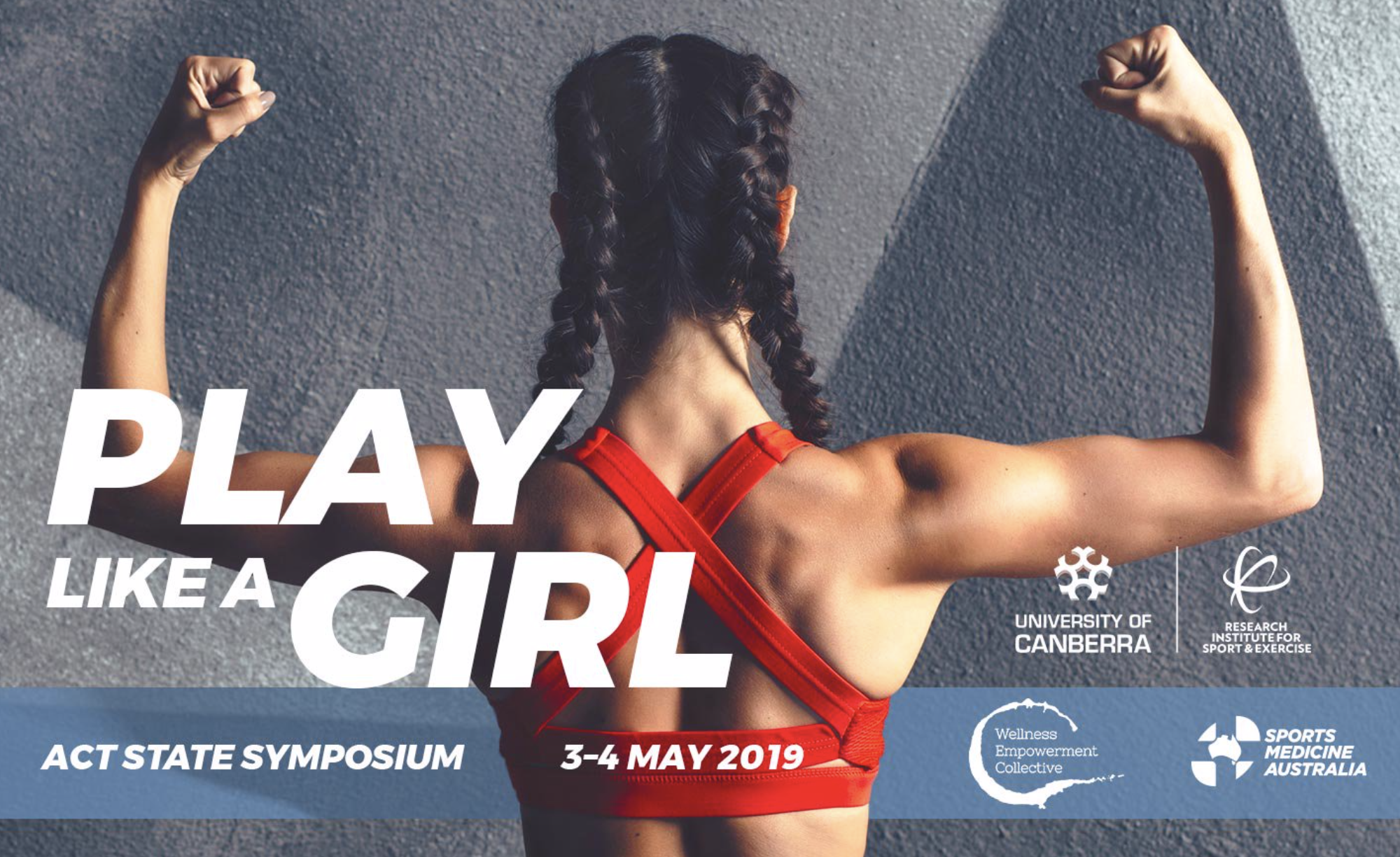By Nash Anderson and Mark Trbojevich
In the week after the FIFA Women’s World Cup we reflect on “How female athletes stay fit to play and own the podium”. In May 2019, Sports Medicine Australia (SMA) hosted the symposium in Canberra, the national capital. Despite the increase in professional sporting competitions for female athletes including Rugby league, Rugby union and soccer, there has not been a similar boost in research for elite female athletes.
Experts from a wide range of fields including Sport & Exercise Medicine, Strength and Conditioning, Physiotherapy, Dietician, Administration, Media, Coaching and Sports Professionals attended the event.
Here’s a summary of what the experts said:
- Associate Clinical Professor Margo Mountjoy @margomountjoy:
- Prof Mountjoy spoke on Prevention of Harassment and Abuse in Sport and gave an update of Relative Energy Deficiency in Sport (RED-S). She asked:
- If we know what sport protection policies exist? How we manage athlete disclosures? If there is protection from predators in the sport we work in? Who is most vulnerable? We know that females are more likely to be victims than males.
- When speaking about RED-S, she recommended that we “measure an athlete’s RED-S after a break”, because even after a 3-month break RED-S can still be present.
- Prof Mountjoy spoke on Prevention of Harassment and Abuse in Sport and gave an update of Relative Energy Deficiency in Sport (RED-S). She asked:
- Professor Louise Burke @LouiseMBurke discussed the need for more studies on female athletes:
- Prof Burke mentioned the importance of knowing the intricacies of our female athletes. She hypothesised that in the future coaching advice may change based on menstrual cycles due to metabolic and absorption changes.
- Professor Grethe Myklebust @MyklebustGrethe discussed risk factors and prevention of lower limb injuries in female athletes as well as screening protocols – how to determine return to play?
- Prof Myklebust asked some big questions like: when can an athlete play again? How can we reduce the risks of reinjury? When should an athlete retire?
- Dr David Hughes @DrDavid_Hughes spoke on the topic of imprecise biology in sport, the effects of testosterone on performance, challenges for gender diverse inclusion in sport and how rulings help to protect sport. He noted: “if females are exposed to testosterone there are ongoing cellular benefits.”
- Associate Professor Kate Pumpa @KatePumpa gave her perspective as a Sports Dietitian and the differences she noticed in working with male and female athletes:
- She used a case study of a female basketballer to show how “increased food intake doesn’t necessarily lead to increased fat percentage. You can lose fat at the same time.”
- Dr Michael Drew @_mickdrew and Margot Rogers @MargotRogers_ asked whether we need to widen the lens for female athletes? And gave the striking statistic that less than 3% of research is in elite females.
- Kate Palmer @KatePalmer_CEO opened our symposium speaking of the imbalance of female professionals in sport: only 13% of Australian coaches at the Rio Olympic Games were women.
- Dr Irmina Nahon @ContPT spoke on pelvic floor and incontinence.
- A great take home from her talk is that everyone has a pelvic floor and incontinence does happen to athletes whether males, female, nulliparous or not. “And, we should discuss this more”, Dr Nahon said.
- Bridget Tilley @bridgettilley spoke of gender inequality in the media: “sportswomen face 3x as many negative comments as men at 27% compared to 9%.”
- She also stated that “You can’t be what you can’t see” and emphasized the need for important strong female role models in the media.
We also appreciated hearing from Dr. Sally Bromley; Ex-Matilda (Australian Women’s Football team) Heather Garriock, Warren McDonald and Nick Ball.
Want more? Skip down below the picture for additional resources.
Kudos to SMA Australian Capital Territory (that’s Australia’s “DC” if you were wondering!) & University of Canberra Research Institute Sport and Exercise. SMA is the peak national umbrella body for sports medicine and sports science and a BJSM member society. Thanks also to Dr. Julie Cooke (PhD) for her assistance on this blog and organising the event.
Recommended follow-up resources:
What would you do if your coach was unethical? Example from Lise-Ann O’Neill: “No way Jose!” Clinicians must have authority over patient care: the manager’s scope of practice does not cover medical decisions. O’Neill L British Journal of Sports Medicine 2016;50:259. https://bjsm.bmj.com/content/50/5/259.info
Sexual harassment and abuse in sport: the role of the team doctor Marks S, Mountjoy M, Marcus M British Journal of Sports Medicine 2012;46:905-908. https://bjsm.bmj.com/content/46/13/905.info FREE
Safeguarding Toolkit from Athlete365: https://www.olympic.org/athlete365/safeguarding/ FREE
Sports dietetic resources:
www.sportsdieticians.com.au FREE
www.sportaus.gov.au/ais/nutrition FREE
IOC consensus statement: dietary supplements and the high-performance athlete. Maughan RJ, Burke LM, Dvorak J, et al British Journal of Sports Medicine 2018;52:439-455. https://bjsm.bmj.com/content/52/7/439.info FREE
The IOC relative energy deficiency in sport clinical assessment tool (RED-S CAT). Mountjoy M, Sundgot-Borgen J, Burke L, et al British Journal of Sports Medicine 2015;49:1354. https://bjsm.bmj.com/content/49/21/1354 FREE
IOC consensus statement on relative energy deficiency in sport (RED-S): 2018 update. Mountjoy M, Sundgot-Borgen JK, Burke LM, et al British Journal of Sports Medicine 2018;52:687-697. https://bjsm.bmj.com/content/52/11/687 FREE
Pelvic Floor website: pelvicfloorfirst.org.au FREE
ACL and injury prevention website: fittoplay.org FREE
***
Mark Trbojevich @Peakhealthchiro is a Sports Chiropractor in private practice at Peak Health Chiropractic in Canberra and has a special interest in performance and injury management. He has also been working with weightling ACT and numerous elite level crossfit athletes. You can follow him on instagram
Nash Anderson @sportmednews is a sports chiropractor in private practice in Canberra with a special interest in sport and exercise medicine. Nash has created sportmednews.com, an open access health and sports medicine resource for clinicians and the public. He also runs communications for Sports Chiropractic Australia, and sits on the SMA ACT board. You can follow him on Twitter/Instagram
